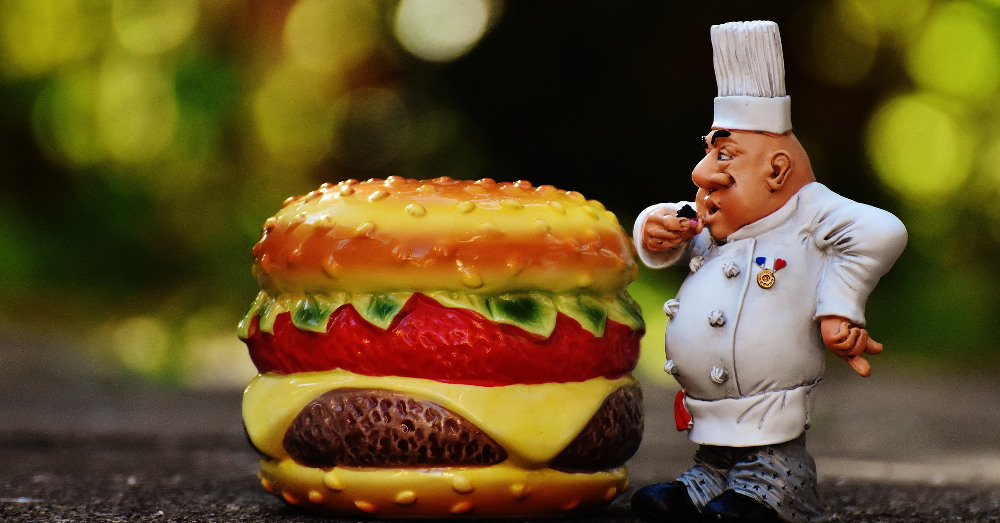
Controversy Over Fake Meat Burger Heats Up as Documents Reveal FDA Safety Concerns
The Impossible Burger is a meat substitute made from soy, wheat, coconut oil, potatoes and plant-based “heme,” the latter of which is derived from genetically engineered (GE) yeast. Documents obtained via a Freedom of Information Act request reveal the U.S. Food and Drug Administration rejected the safety claims of the product, noting the company’s assessment of possible allergenicity is lacking.
August 21, 2017 | Source: Mercola.com | by Dr. Joseph Mercola
Three years ago, I wrote about the safety questions looming over the meat substitute known as Quorn, a fungus-based ferment that hit the U.S. market in 2002. Quorn was originally developed by Imperial Chemical Industries, one of the largest chemical companies in the U.K. The fungus used to make quorn is Fusarium venenatum, which is Latin for “venomous.”
Since its inception, a number of studies1 have raised concerns about Quorn’s safety, especially in people with food- and/or mold allergies. An early study by the manufacturer found 10 percent of 200 human subjects developed nausea or stomachache after eating Quorn.2 The Center for Science in the Public Interest (CSPI) maintains an adverse report collection site for Quorn-related illnesses, which include:3
Nausea
Cramps and/or diarrhea
Forceful vomiting
Anaphylactic reactions
Death4
Enter the Impossible Burger
The Quorn brand now has competition from Impossible Foods and its meatless, “bleeding” burger.5,6,7,8,9 Contrary to lab grown meat10 (which may hit the U.S. market as early as next year11), this meat substitute contains a mix of soy, wheat, coconut oil, potatoes and “heme,” the latter of which is derived from genetically engineered yeast.
Impossible Foods was founded in 2011 by Pat Brown, a Stanford University chemist. A primary ingredient in the Impossible Burger is genetically engineered soy leghemoglobin, which releases a heme-like protein when broken down. This protein is what gives the plant-based patty its meatlike look, taste and texture, and makes the patty “bleed” when cooked.
While the company refers to it as “heme,” technically, plants produce non-heme iron, and this is technically GE yeast-derived soy leghemoglobin.12 Heme iron only occurs in meat and seafood. A main difference between heme and non-heme iron has to do with its absorbability. Plant-based non-heme iron is less readily absorbed. This is one of the reasons why vegans are at higher risk of iron-deficiency anemia than meat eaters. Moreover, while soy leghemoglobin is found in the roots of soybean plants, the company is recreating it using GE yeast. As explained on the company website:13
“Heme is exceptionally abundant in animal muscle — and it’s a basic building block of life in all organisms, including plants. We discovered how to take heme from plants and produce it using fermentation …
We genetically engineer yeast to make a key ingredient: heme. The process allows us to produce the Impossible Burger at scale with the lowest achievable environmental impact. We start with the gene for a protein called leghemoglobin, a heme protein that is naturally found in the root nodules of soy plants …
We add the soy leghemoglobin gene to a yeast strain, and grow the yeast via fermentation. Then we isolate the leghemoglobin, or heme, from the yeast. We add heme to the Impossible Burger to give it the intense, meaty flavor, aroma and cooking properties of animal meat.”
Meatless GE Plant Burger Is New Investment Darling
The Impossible Burger resembles meat “right down to the taste and beeflike ‘blood,'” The New York Times notes,14 and has become a hit in some circles. So far, the company has raised $257 million from investors,15 which include Bill Gates, Khosla Ventures, Facebook co-founder Dustin Moskovitz’s Open Philanthrophy Project, Li Ka-shing (a Hong Kong billionaire) and Singapore’s sovereign wealth fund, Temasek Holdings.
While the company clearly markets the product as a benefit to the environment and your health, one could easily question the lucrative aspects of a patented food source with the goal of replacing the meat on your plate with ‘meat replicas’. I hope businesses will see food as more than just DNA, code that can be written and patented like a Microsoft product.
Is this “environmentally-friendly,” animal-free meat patty all it’s cracked up to be? From my perspective, a key feature of healthy food is being as natural and unprocessed as possible, and meat alternatives such as the Impossible Burger and Quorn involve the highest level of processing imaginable. These products are manufactured from start to finish, and involve the use of man-made ingredients.
Even more importantly, real, whole food such as meat contain a complex mix of nutrients and cofactors that you cannot recreate by an assembly of individual components. As a general rule, I believe man-made foods are vastly inferior to natural, whole foods and always will be. Outperforming nature is a tall order, and no one has succeeded yet. As such, I believe extreme caution is warranted. Apparently, so does the U.S. Food and Drug Administration (FDA). As reported by The New York Times:16
“[I]ts secret sauce — soy leghemoglobin … has raised regulatory questions. Impossible Foods wants the [FDA] to confirm that the ingredient is safe to eat. But the agency has expressed concern that it has never been consumed by humans and may be an allergen, according to documents17 obtained under a Freedom of Information request by the ETC Group as well as other environmental and consumer organizations …
‘FDA believes the arguments presented, individually and collectively, do not establish the safety of soy leghemoglobin for consumption,’ agency officials wrote in a memo they prepared for a phone conversation with the company on Aug. 3, 2015, ‘nor do they point to a general recognition of safety.’ Impossible Foods can still sell its burger despite the FDA findings, which did not conclude that soy leghemoglobin was unsafe. The company plans to resubmit its petition to the agency.”
